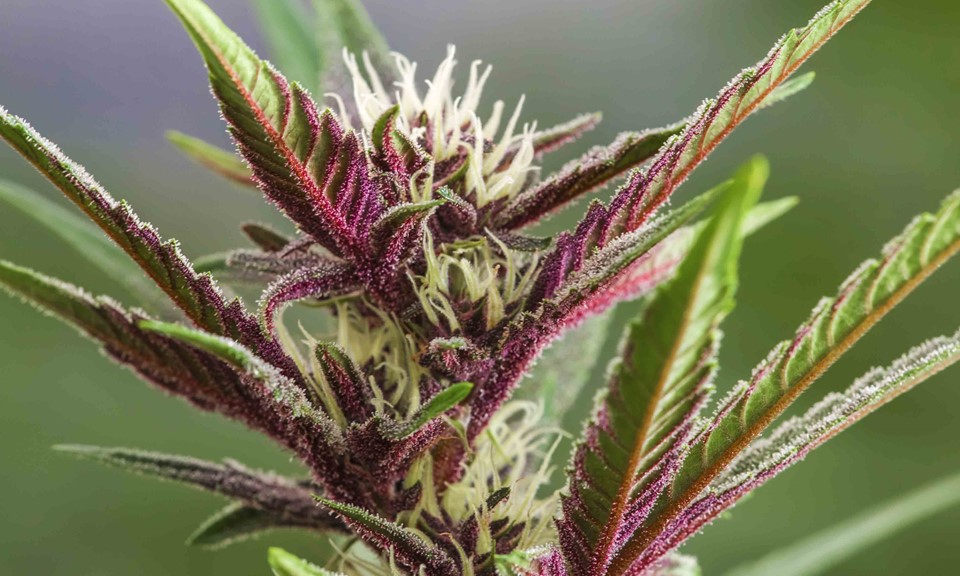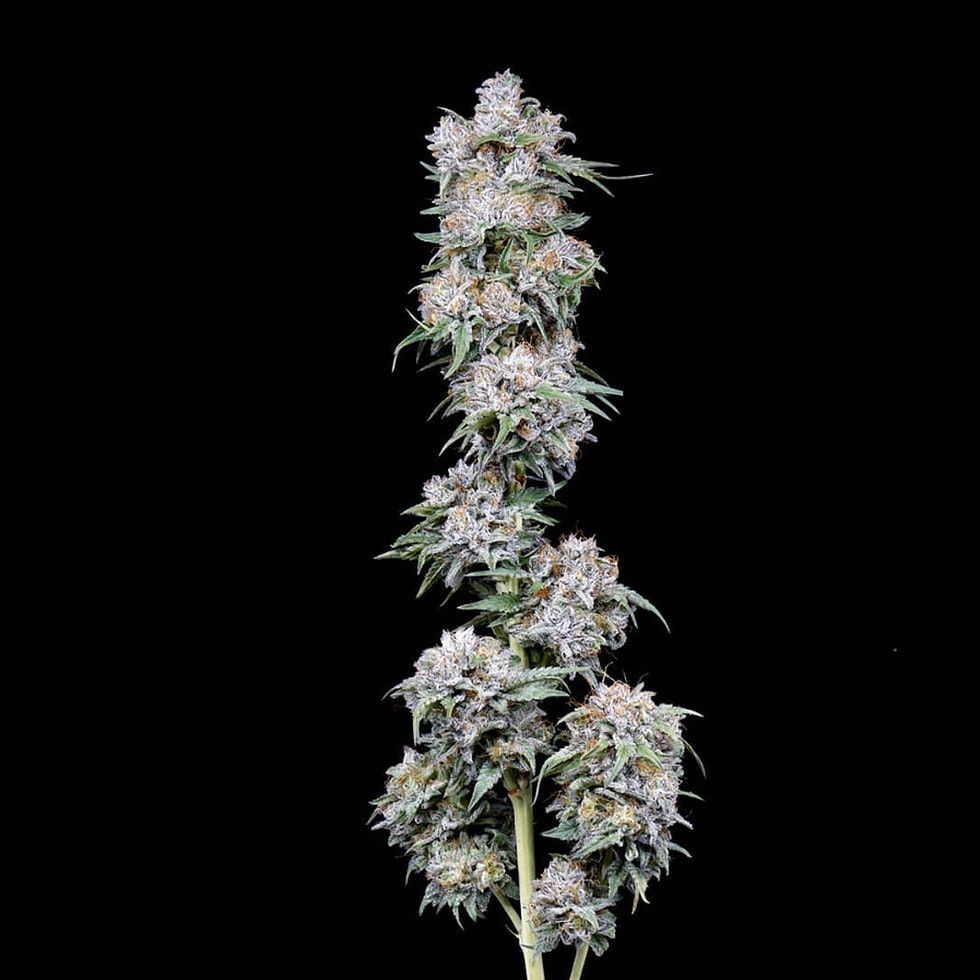
How does cannabis get its color? This is why some varieties turn blue
Environment and genetics both play a role in a plant’s coloration. But what exactly makes each strain look the way it does? What gives Black Cherry Soda its otherworldly color of dark purple with bright orange hairs cutting through it like streaks of fire?
Let’s explore the color of cannabis and explore what factors influence its coloring, why some strains are more vibrant than others, and whether purple = potent.
How do genetics affect marijuana color?

For plants to be able to express vibrant non-green hues, they need the genetic building blocks to do so. These building blocks are called anthocyanins, a family of flavonoids that provide purple, red, or blue pigments — these are also found in blueberries, eggplant, red cabbage, Concord grapes, violets, and other colorful plants. Some cannabis strains naturally contain higher levels of anthocyanins than others.
Have you ever noticed that some of your favorite strains tend to show the same colors over and over again? Granddaddy Purple, for example, always seems to sport swirls of deep purple and pastel lavender.
This alternative coloration indicates the strain’s disposition for high anthocyanin levels, and it’s certainly a trait that some cannabis breeders try to select and enforce, if only to make us consumers ooh-and-ahh over pretty colors ( hence the long line of “Purple” strains, including Purple Kush, Mendocino Purps, Purple Urkle, and many others).
Related
Cannabis Genotypes and Phenotypes: What Makes a Strain Unique?
Which marijuana strains tend to turn purple, blue, or orange?
Many strains contain a genetic predisposition for high levels of anthocyanins, and you’ll often find them under nicknames that begin with colors like purple, red, blue, or pink. No, that doesn’t mean these strains will always exhibit fancy hues, but they do have a higher potential for it when the conditions are right.
Plants low in anthocyanins can produce a different range of colors in the final weeks of flowering due to a different family of molecules called carotenoids. These are responsible for the earthy golds and yellows that buds can take on before harvest when the chlorophyll shuts down.

How does cannabis change from green to blue?
As you might remember from your elementary school biology class, chlorophyll is what gives plants their green color. Chlorophyll is critical to the photosynthetic process by which plants absorb sunlight for energy.
As cannabis plants mature, they produce less of the dominant pigment, chlorophyll, and we begin to see these anthocyanins emerge in a show of purples, reds, and blues. Growers should note that there are certain environmental conditions that trigger chlorophyll production to stop. We’ll get into that shortly.
What other environmental factors affect the color of cannabis?
While not all cannabis strains will exhibit purple, blue, or red hues over their lifetime, those endowed with the right genetics can do so under certain environmental conditions. Researchers have observed that the reason cannabis produces flavonoids and anthocyanins is for protection.
“Flavonoid Accumulation [is] involved in many aspects of plant growth,” the study authors wrote, “including resistance to pathogens, pigment production, and protection from ultraviolet radiation, which contributes to pollen growth and seed coat development.”
Information on anthocyanin production in cannabis is limited. Much of what we know comes from cannabis growing experience and from studies measuring patterns of anthocyanin production in other plants.
Related
Cannabis Anatomy: The Parts of the Plant
First there is the temperature. Purple, red, and blue hues can appear in response to drops in temperature, as chlorophyll production takes its natural break in the fall when the days get colder.
Research on other fruits and flowers has found that higher temperatures destroy anthocyanin production. The same study also found that higher pH levels lead to the destruction of anthocyanin pigments, meaning they tend to thrive in more acidic environments.
The pH value determines which dye the plant absorbs:
- Acidic environments tend to induce red and pink coloring
- A purple tint occurs in neutral pH environments
- Blues occur at higher pH levels
- Yellow is developed under alkaline conditions
Are purple cannabis strains stronger?
They may be flashier, but purple strains aren’t necessarily more potent than their green cousins. A purple flowering plant exposed to cold temperatures may actually produce less THC, so it’s important to keep in mind, as Robert Clarke aptly put it in The Cannabible, that “many traits are only found in certain strains under certain conditions.” prove desirable”.
This post was originally published on March 21, 2016. It was last updated on July 28, 2020.
Pat Goggins
Pat Goggins is a contributing editor at Leafly and has specialized in cannabis cultivation after working for a commercial grower in Oregon for two years. When you’re not correcting typos, chances are you’ll find him on a boat or in the mountains.
Check out Pat Goggins’ articles
By submitting this form, you are subscribing to Leafly news and promotional emails and agreeing to Leafly’s Terms of Service and Privacy Policy. You can unsubscribe from Leafly email communications at any time.

Post a comment: